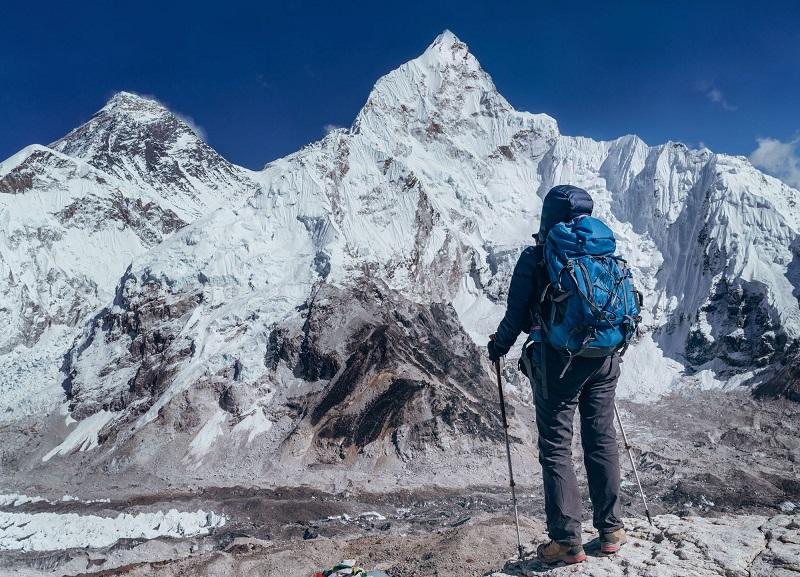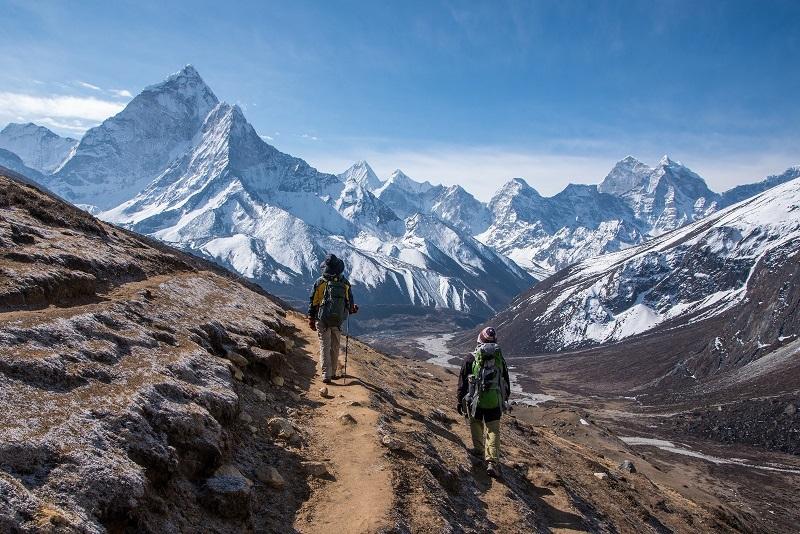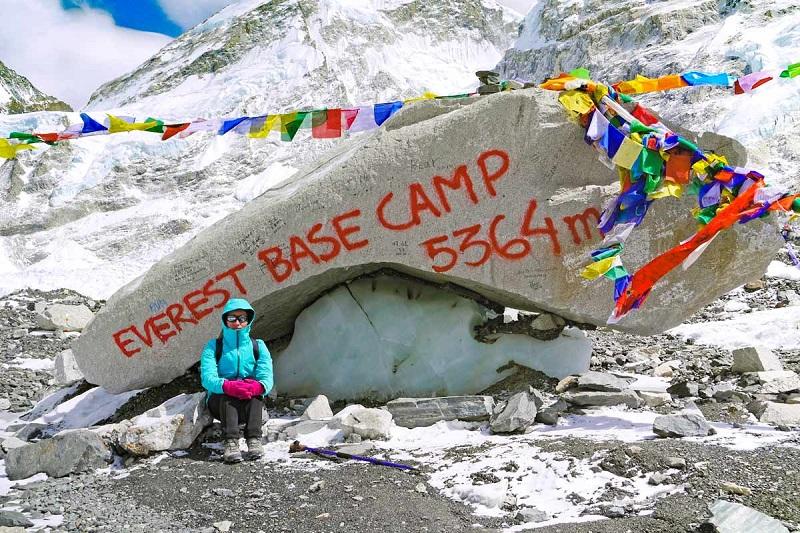Love the sense of accomplishment? The drive to overcome obstacles? Consider adding climbing Everest Base Camp to your bucket list. Everest offers a thrilling challenge as the world’s highest peak at 29,031.7ft, located in the Mahalangur Himal sub-range of the Himalayas. It has two base camps, South Base Camp in Nepal (17,598ft) and North Base Camp in Tibet, China (16,900ft).
Reaching Everest Base Camp is a remarkable achievement for any traveller. The routes, known as Sagamartha in Nepali and Chomolungma in Tibetan, lead adventurous climbers to the base of Everest. Conquering Mother Nature brings immense pride, evident on the faces of those returning from the expedition. However, the route’s popularity has raised concerns about trekker traffic jams and littering.
While climbing Everest Base Camp holds significance for many, I believe that Kilimanjaro offers a more challenging path. At a height of 5,895m, Kilimanjaro is conquered in six days, with a final summit climb of 1,200m. In comparison, Everest Base Camp, at 5,600m, takes nine days, allowing climbers more time to acclimatize. Kilimanjaro also provides five sleeping centres during the ascent, while Nepal offers two rest days, facilitating better acclimatization.
Although Everest is relatively more accessible, it is still a demanding task. While not technically challenging, the climb’s difficulty lies in the harsh effects of altitude on the body. Altitude training is impossible beforehand, making it the primary reason some individuals fail to reach the base camp. Proper acclimatization through a slow pace, well-planned itinerary, good nutrition, and adequate hydration is the key to success.
How to prepare for your climb

Don’t worry about the overwhelming information on the internet. You don’t need to be a professional athlete to tackle this climb. It mainly depends on your fitness level. You can manage this climb if you can handle a 5-6 hour hike up and down a hill daily. However, some preparation will give you an advantage.
-Focus on improving your cardiovascular endurance, leg strength, and overall fitness. Include running, stair climbing, hiking, and exercises that condition your muscles and breathing, such as swimming and yoga.
-Keep your luggage light. Avoid packing unnecessary items and aim for a maximum weight of 10-15 kilograms. Remember that a porter can assist with your luggage, so don’t pack unnecessary heavy items like a microwave.
-Choose footwear already broken in, along with trekking socks and sneakers. Pack thermal underwear, two long pants, and three synthetic shirts (avoid cotton). For protection against the elements, bring a fleece jacket, two long-sleeve shirts, and a raincoat.
-Assemble a first aid kit with essentials such as medication for diarrhea, antibiotics for chest or sinus infections, adhesive bandages, and hydrocolloid blister bandages.
-Carry enough Nepalese Rupees in cash to cover expenses like meals, Wi-Fi, showers, and toiletries. Withdraw the money from an ATM in Kathmandu before starting your journey. ATMs along the route are scarce and may be affected by bad weather.
When is the best time to climb to Base Camp?
The base camp has two primary climbing seasons: pre-monsoon (March to May) and post-monsoon (October to November). May is hot before the monsoon, and rain can be expected during the monsoon.
From March to May, the weather starts cold and gradually becomes warmer, with the opposite pattern in the post-monsoon season. December temperatures drop below zero, but the days are generally calm, with fewer climbers.
What is it like on the journey to Base Camp?

Conquer the excitement! The locals are as friendly as your favourite sitcom characters. Scaling those peaks feels like a wild family reunion, minus the awkward Uncle Bob stories. Prepare for mind-blowing vistas and cultural quirks that’ll tickle your funny bone during the climb. Don’t forget to channel your inner zen by visiting monasteries with your guides.
Days are a symphony of determined chants. You’ll waltz past colourful prayer flags while crossing metal bridges. And when you’ve conquered mountains with Herculean effort, evenings reward you with platefuls of hot Nepali food and cups of Chai that’ll warm your soul faster than a Netflix binge session.
But here’s the real punchline: the perfect blend of culture, hospitality, and the sheer pride of completing this milestone will make you feel like you’ve conquered the world. Climbing to Everest Base Camp will be the ultimate adventure that’ll have you laughing, crying, and screaming, “I did it!” all at once.
Tips to help you achieve your dream
Many opinions are circulating online regarding how to climb to the base successfully. However, treating this endeavour as a vacation offers the optimal solution for experiencing the most exhilarating adventure.
Here are some essential guidelines to follow:
-Embrace a leisurely pace: Taking your time during the ascent is crucial. Attempting to reach the base in just eight days may prove challenging and less likely to yield success. Instead, allow yourself around 9 to 10 days to climb, allowing for proper acclimatization. Adopting this approach significantly increases your chances of conquering the climb.
-Remain vigilant: While the route is well-marked, certain sections can pose potential threats. For instance, passing herds of yaks or donkeys may make narrow cliffs appear even more treacherous. Additionally, these animals are often equipped with bells, so it’s essential to stay alert to avoid any unfortunate collisions.
-Dress appropriately: The sun at high altitudes can be unforgiving. Protect your face by wearing a buff or applying reliable sunscreen. Opt for long-sleeved tops and pants to shield your skin from the harsh rays.
Now that you have familiarized yourself with these guidelines, you are prepared to don your climbing shoes and embark on this journey of conquering Mother Nature. Remember, the sense of pride and accomplishment that awaits you at the summit is a personal virtue everyone strives to attain.
Conclusion
Climbing to Everest Base Camp is an awe-inspiring adventure that offers a rewarding experience for outdoor enthusiasts and mountaineering enthusiasts alike. The journey provides breathtaking views of the majestic Himalayas and immerses individuals in the region’s rich Sherpa culture and traditions.
While it requires physical fitness, mental resilience, and proper preparation, reaching Everest Base Camp is a testament to personal determination and a source of great accomplishment. Whether you are an experienced climber or a passionate trekker, embarking on this expedition offers a once-in-a-lifetime opportunity to witness the grandeur of Mount Everest and create lasting memories.



